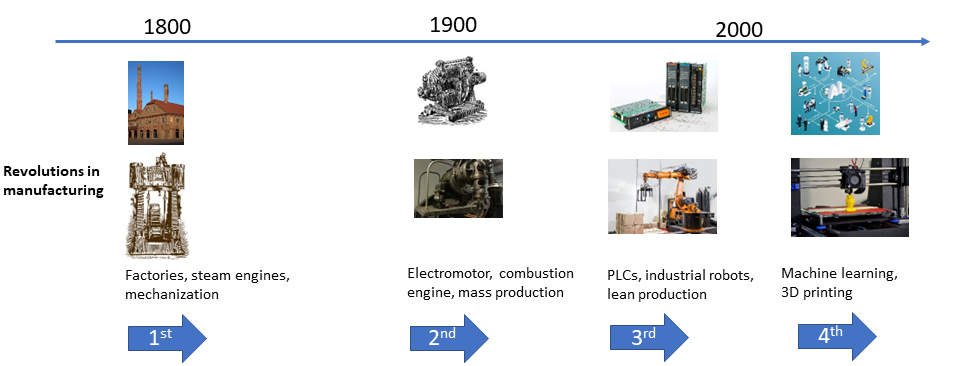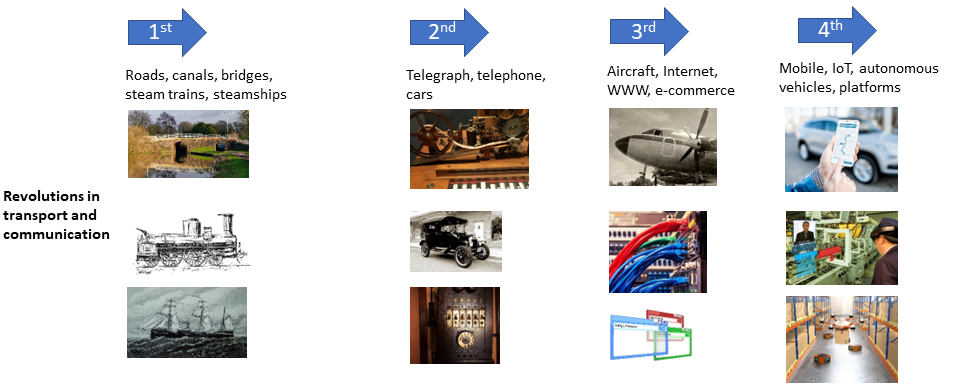Four transformations of the economy
Digitalization is not the first transformation of the economy. There have been four major transformation is the past 200 years. Before the first of these transformations, manufacturing and transport used energy provided by human and animal muscles, windmills, waterwheels, and biomass. In the 18th century coal became a large-scale source of energy, later followed by oil and natural gas. This fueled four revolutions that transformed the economy (Friedel, 2010). Here is a picture of some major transformative manufacturing technologies in these revolutions.

- Steam machines mechanized production, which made it possible to locate manufacturing at other places than near streams that provided waterpower and made manufacturing independent from the availability of wind. Steam machines provided one central source of power in a factory.
- Electrical motors and combustion engines allowed decentralization of power sources in a factory, which eventually led to a complete redesign of factory layouts (David, 1990).
- Industrial robots automated manufacturing using PLCs, which increased productivity and flexibility of the manufacturing process.
- The fourth revolution is the digital transformation. Data collection, digital networks, and machine learning enable companies to outsource tasks to collaborative networks and to use data-driven techniques to optimize production. 3D printing makers additive manufacturing possible.
In addition to revolutionizing manufacturing, the four revolutions transformed transport and communication. Here are the same revolutions, viewed from a network perspective:

- Railroads and steamships revolutionized local and global transport. This expanded markets. Fresh farm products could be sold further away from the farm.
- Telegraph and telephone made instant global communication possible. Road networks enabled faster transport by cars propelled by combustion engines. This again expanded markets. Instant global communication transformed global governance structures.
- Aircraft reduced transport times globally. The Internet reduced the cost for global communication and transactions. Distributed teams and online business became possible. Products were replaced by services in new business models.
- In the digital transformation, mobile communication, augmented reality and autonomous devices form intelligent networks with real-time data collection and analysis to improve services.
Stepping back to include both perspectives, we see that each of the four revolutions allowed increased productivity, enlarged markets, and improved coordination and communication. They transformed the technological infrastructure and enabled new business models (Lipsey, et al., 2005). The current digital transformation is the latest revolution, number 4 in this series. Looking again at the technologies in manufacturing and communication that enable the digital transformation, we see that the digital transformation is essentially a network revolution.
David, P., 1990. The Dynamo and the Computer: An Historical Perspective on the Modern Productivity Paradox. The American Economic Review, 80(2), pp. 355-361.
Friedel, R., 2010. A Culture of Improvement: Technology and the Western Millenium. MIT Press.
Lipsey, R., Carlaw, K. & Bekar, C., 2005. Economic Transformations. General Purpose Technologies and Long Term Economic Growth. Oxford University Press.


